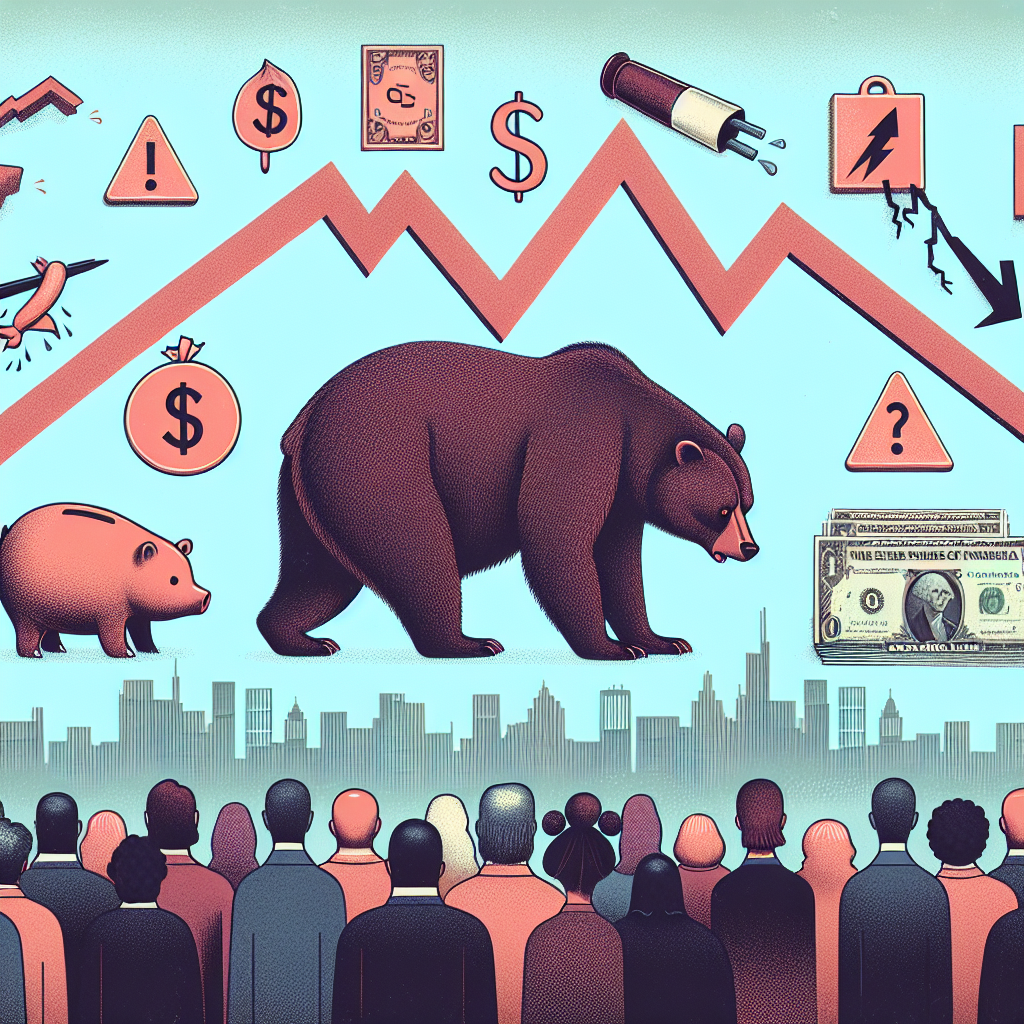## Stocks Slide as Tariff Concerns and Economic Worries Mount
The US stock market opened mostly lower as lingering concerns over tariffs and a slowing economy weighed on investor sentiment. Heightened uncertainty surrounding trade policies and consumer demand is fueling volatility, leaving investors cautious about future growth prospects.
### **Tariffs on Canadian Goods Increase Investor Anxiety**
The latest market downturn was partly driven by former President Donald Trump’s announcement of increased tariffs on Canadian imports. Canadian trade partners and US businesses that rely on cross-border commerce are closely monitoring the situation, fearing potential retaliation from Canada, which could further disrupt supply chains.
Trade restrictions often lead to higher prices for imported goods, negatively impacting businesses and consumers alike. Higher costs could reduce consumer spending, ultimately leading to slower economic growth—a key concern reflected in the stock market’s performance.
### **Concerns Over Economic Slowdown Weigh on Markets**
Beyond trade tensions, broader economic worries are affecting investor confidence. US companies have reported signs of declining consumer demand, a crucial factor for sustained economic expansion. Some recent trends contributing to economic uncertainty include:
– **Declining Retail Sales:** Consumers are spending less on discretionary goods, signaling weaker demand and potential pressure on corporate earnings.
– **Job Market Uncertainty:** Although unemployment rates remain relatively stable, signs of slower job creation raise questions about economic resilience.
– **Interest Rate Concerns:** The Federal Reserve’s approach to interest rate policies continues to be a topic of debate among market analysts.
A combination of these factors has led to increased unease among investors, prompting some to adopt a more defensive approach to their portfolios.
### **Market Reaction: Sector Performance and Key Index Movements**
As the stock market reacts to these developments, different sectors exhibit varying levels of resilience:
#### **Sectors Facing Pressure:**
– **Retail and Consumer Goods:** With declining consumer demand, companies reliant on consumer spending, including retailers and major brands, have experienced stock price declines.
– **Automotive and Manufacturing:** Rising tariffs on Canadian imports could impact companies with cross-border operations, particularly manufacturers relying on raw materials and industrial goods.
#### **Sectors Showing Resilience:**
– **Energy and Utilities:** Traditionally seen as defensive sectors, energy companies and utility stocks have held steadier amid market turbulence.
– **Technology Giants:** Some larger tech firms, particularly those with strong cash reserves and diversified revenue streams, have managed to limit losses.
The **Dow Jones Industrial Average, S&P 500, and Nasdaq** all opened lower, reflecting overall negative market sentiment. However, fluctuations remain likely as investors react to additional economic data and government policy decisions in the coming weeks.
### **Investor Sentiment: What’s Next for the Market?**
With uncertainty lingering over tariffs, trade policies, and economic performance, many investors are adopting a cautious stance. Several key factors will influence market movement in the coming months, including:
– **Further Trade Policy Decisions:** Any changes to tariffs, negotiations with Canada, or broader trade agreements could either ease or escalate concerns.
– **Future Federal Reserve Actions:** Investors anticipate potential adjustments in interest rates that could impact borrowing costs and corporate investment.
– **Corporate Earnings Reports:** As companies release their quarterly earnings, investors will gain better insight into how economic conditions are affecting businesses.
### **How Investors Can Navigate Market Uncertainty**
During periods of market turbulence, strategic investing becomes crucial. Here are some tips for managing portfolio stability:
#### **1. Diversify Investments**
A well-balanced portfolio across different asset classes, including stocks, bonds, and commodities, can help mitigate risks.
#### **2. Focus on Defensive Stocks**
Sectors such as healthcare, utilities, and consumer staples tend to perform better during economic slowdowns. Investing in companies with strong fundamentals can offer stability.
#### **3. Monitor Interest Rate Trends**
Understanding how Federal Reserve policies impact borrowing costs and market liquidity can help investors make informed decisions.
#### **4. Stay Updated on Trade Policies**
Following developments in trade negotiations and potential tariff changes can help investors anticipate market movements.
### **Conclusion: Market Uncertainty Calls for Strategic Approach**
The stock market’s negative opening reflects ongoing concerns over tariffs, economic slowdown risks, and investor sentiment. While market fluctuations are expected, a strategic and diversified investment approach can help navigate periods of uncertainty. As developments unfold, keeping a close eye on economic indicators, policy changes, and corporate earnings will be essential for making informed financial decisions.



Leave a Reply